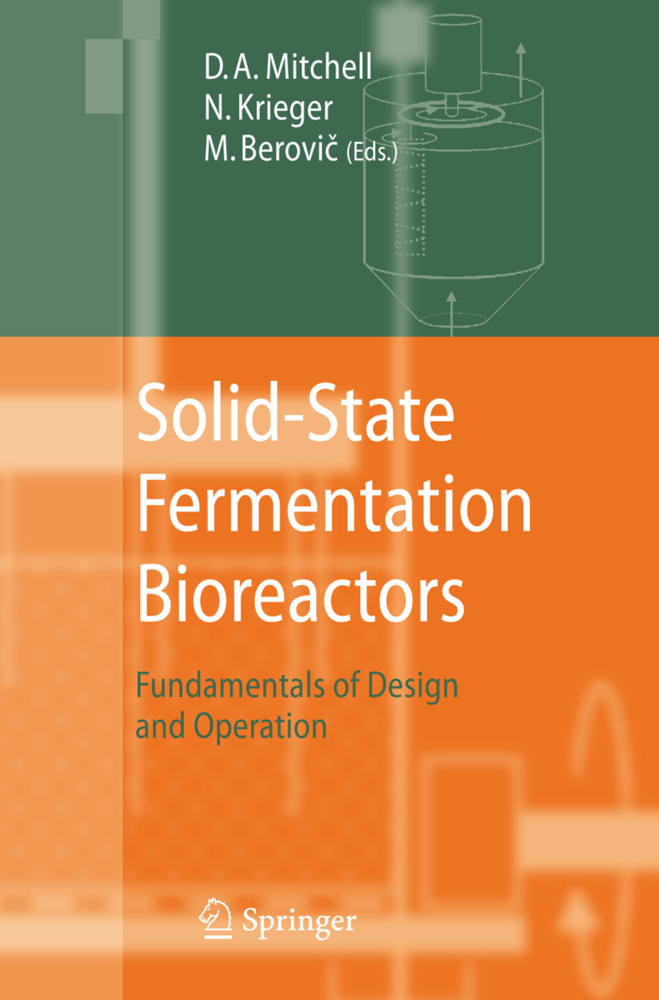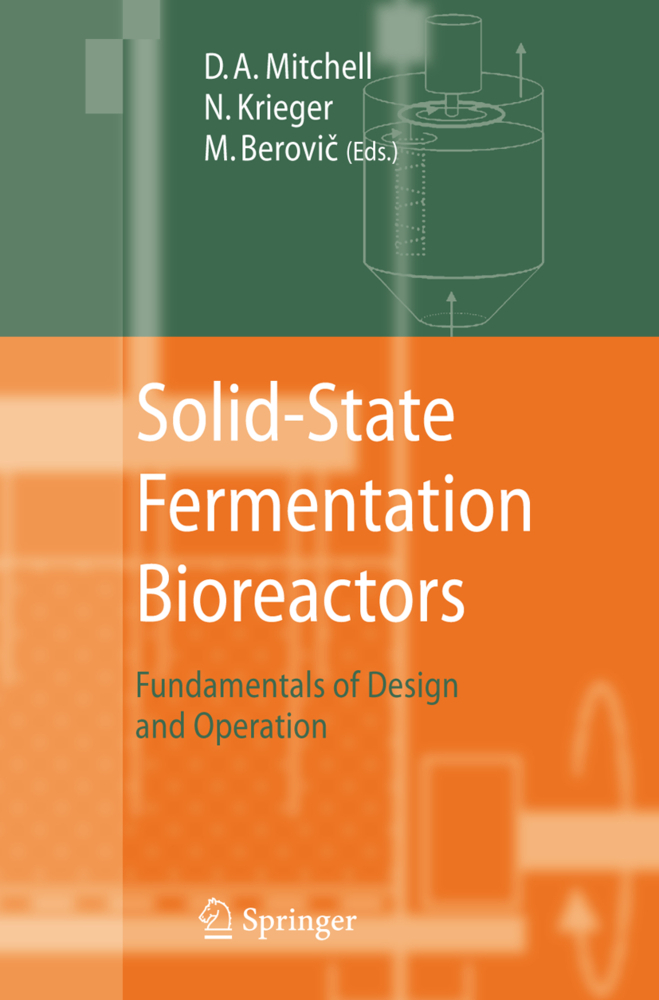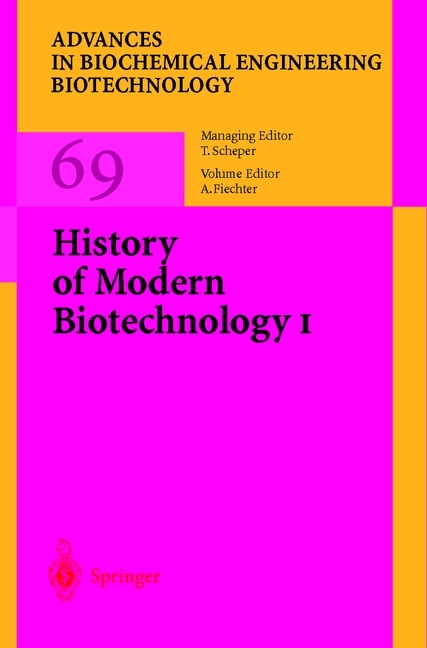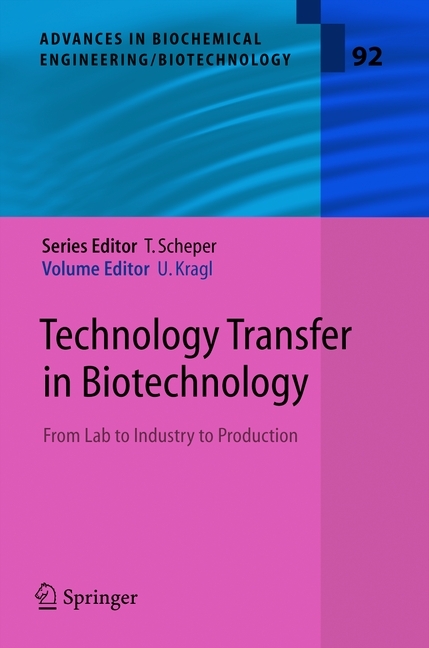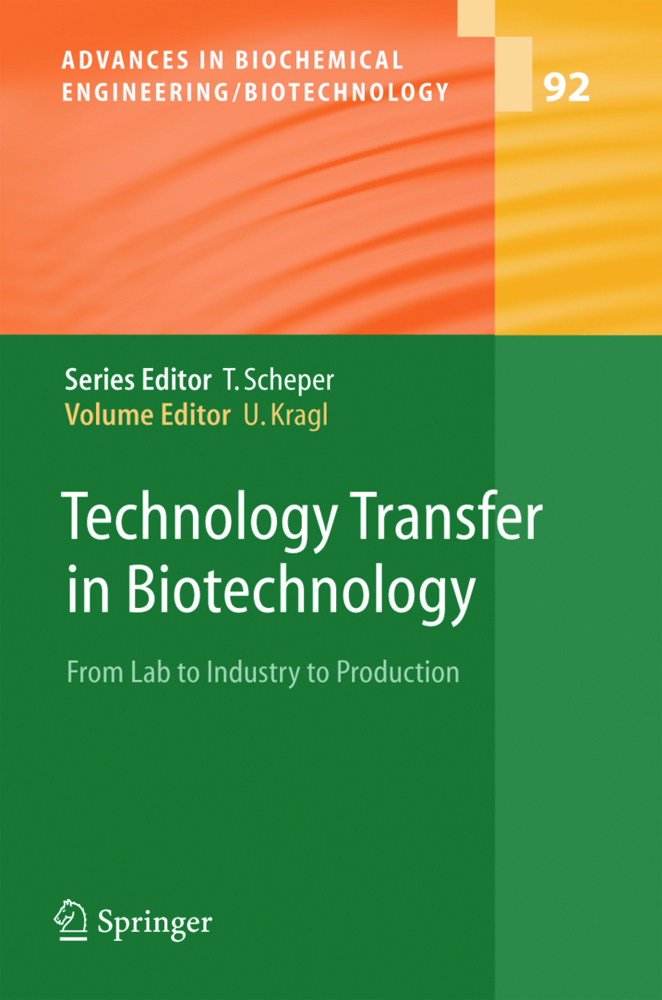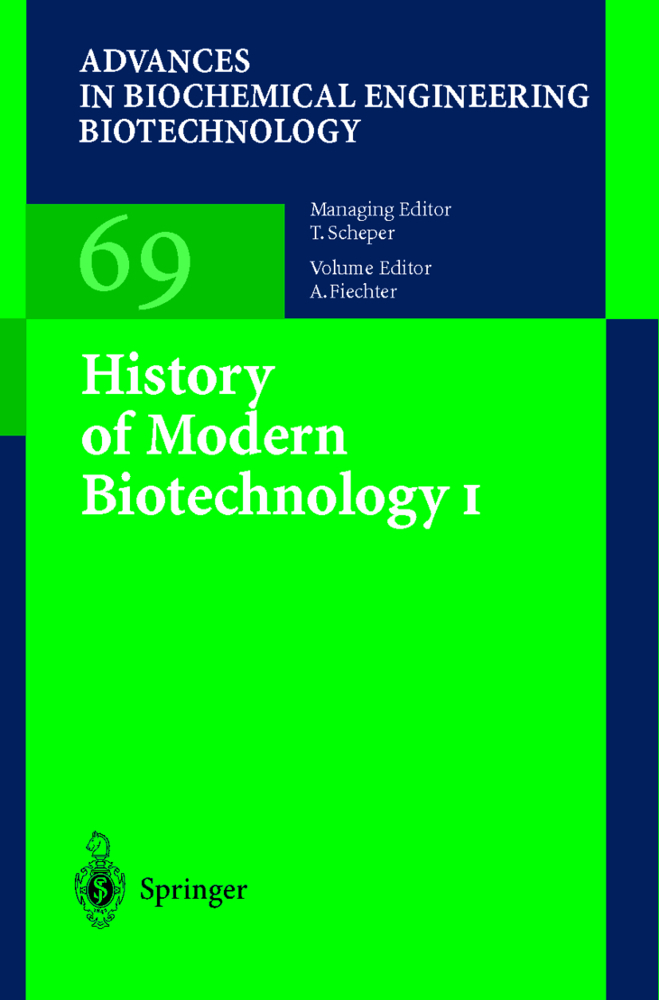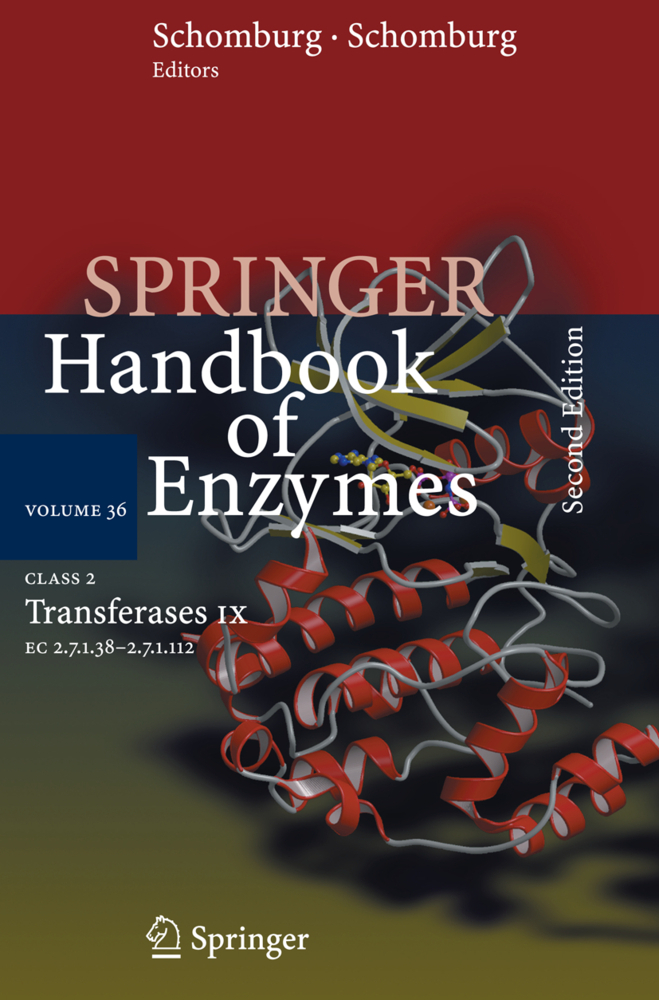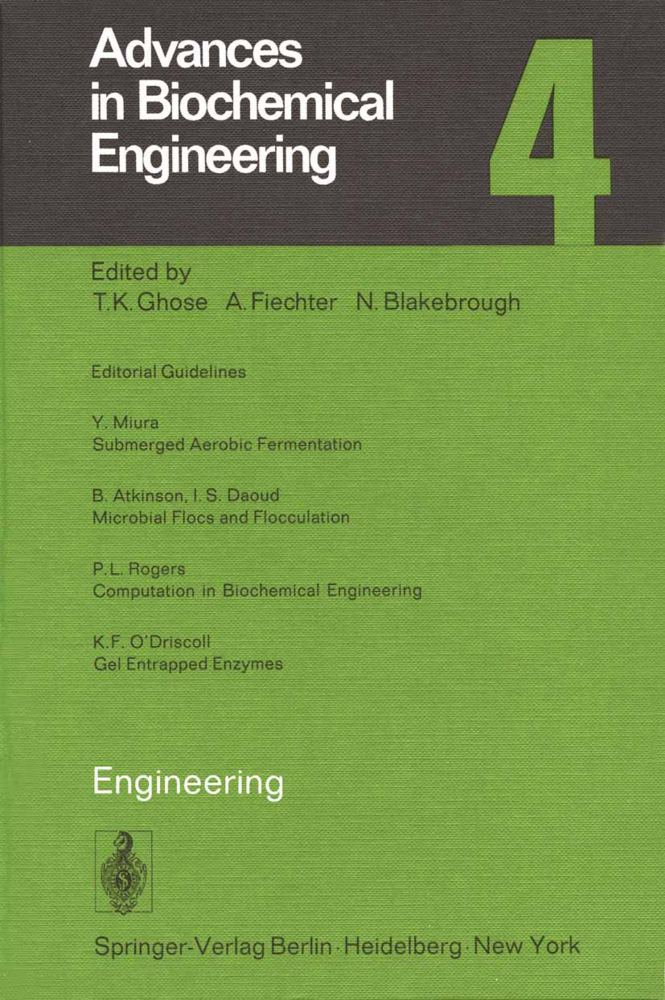Solid-State Fermentation Bioreactors
Fundamentals of Design and Operation
Although solid-state fermentation (SSF) has been practiced for many centuries in the preparation of traditional fermented foods, its application to newer products within the framework of modern biotechnology is relatively restricted. It was c- sidered for the production of enzymes in the early 1900s and for the production of penicillin in the 1940s, but interest in SSF waned with the advances in submerged liquid fermentation (SLF) technology. The current dominance of SLF is not s- prising: For the majority of fermentation products, it gives better yields and is e- ier to apply. It is notoriously difficult to control the fermentation conditions in SSF; these difficulties are already apparent at small scale in the laboratory and are exacerbated with increase in scale. However, there are particular circumstances and products for which SSF technology is appropriate. For example, a desire to reuse solid organic wastes from agriculture and food processing rather than simply discarding them leads naturally to the use of SSF. Further, some microbial pr- ucts, such as fungal enzymes and spores, amongst others, are produced in higher yields or with better properties in the environment provided by SSF systems. With recognition of this potential of SSF, a revival of interest began in the mid- 1970s. However, the theoretical base for SSF bioreactor technology only began to be established around 1990.
to Solid-State Fermentation Bioreactors
Basics of Heat and Mass Transfer in Solid-State Fermentation Bioreactors
The Scale-up Challenge for SSF Bioreactors
Group I Bioreactors: Unaerated and Unmixed
Group II Bioreactors: Forcefully-Aerated Bioreactors Without Mixing
Group III: Rotating-Drum and Stirred-Drum Bioreactors
Group IVa: Continuously-Mixed, Forcefully-Aerated Bioreactors
Group IVb: Intermittently-Mixed Forcefully-Aerated Bioreactors
Continuous Solid-State Fermentation Bioreactors
Approaches to Modeling SSF Bioreactors
Appropriate Levels of Complexity for Modeling SSF Bioreactors
The Kinetic Sub-model of SSF Bioreactor Models: General Considerations
Growth Kinetics in SSF Systems: Experimental Approaches
Basic Features of the Kinetic Sub-model
Modeling of the Effects of Growth on the Local Environment
Modeling of Heat and Mass Transfer in SSF Bioreactors
Substrate, Air, and Thermodynamic Parameters for SSF Bioreactor Models
Estimation of Transfer Coefficients for SSF Bioreactors
Bioreactor Modeling Case Studies: Overview
A Model of a Well-mixed SSF Bioreactor
A Model of a Rotating-Drum Bioreactor
Models of Packed-Bed Bioreactors
A Model of an Intermittently-Mixed Forcefully-Aerated Bioreactor
Instrumentation for Monitoring SSF Bioreactors
Fundamentals of Process Control
Application of Automatic Control Strategies to SSF Bioreactors
Design of the Air Preparation System for SSF Bioreactors
Future Prospects for SSF Bioreactors.
Solid-State Fermentation Bioreactor Fundamentals: Introduction and Overview
The Bioreactor Step of SSF: A Complex Interaction of Phenomenato Solid-State Fermentation Bioreactors
Basics of Heat and Mass Transfer in Solid-State Fermentation Bioreactors
The Scale-up Challenge for SSF Bioreactors
Group I Bioreactors: Unaerated and Unmixed
Group II Bioreactors: Forcefully-Aerated Bioreactors Without Mixing
Group III: Rotating-Drum and Stirred-Drum Bioreactors
Group IVa: Continuously-Mixed, Forcefully-Aerated Bioreactors
Group IVb: Intermittently-Mixed Forcefully-Aerated Bioreactors
Continuous Solid-State Fermentation Bioreactors
Approaches to Modeling SSF Bioreactors
Appropriate Levels of Complexity for Modeling SSF Bioreactors
The Kinetic Sub-model of SSF Bioreactor Models: General Considerations
Growth Kinetics in SSF Systems: Experimental Approaches
Basic Features of the Kinetic Sub-model
Modeling of the Effects of Growth on the Local Environment
Modeling of Heat and Mass Transfer in SSF Bioreactors
Substrate, Air, and Thermodynamic Parameters for SSF Bioreactor Models
Estimation of Transfer Coefficients for SSF Bioreactors
Bioreactor Modeling Case Studies: Overview
A Model of a Well-mixed SSF Bioreactor
A Model of a Rotating-Drum Bioreactor
Models of Packed-Bed Bioreactors
A Model of an Intermittently-Mixed Forcefully-Aerated Bioreactor
Instrumentation for Monitoring SSF Bioreactors
Fundamentals of Process Control
Application of Automatic Control Strategies to SSF Bioreactors
Design of the Air Preparation System for SSF Bioreactors
Future Prospects for SSF Bioreactors.
Mitchell, David A.
Krieger, Nadia
Berovic, Marin
| ISBN | 978-3-540-31285-7 |
|---|---|
| Artikelnummer | 9783540312857 |
| Medientyp | Buch |
| Copyrightjahr | 2006 |
| Verlag | Springer, Berlin |
| Umfang | XXXVIII, 448 Seiten |
| Abbildungen | XXXVIII, 448 p. |
| Sprache | Englisch |

